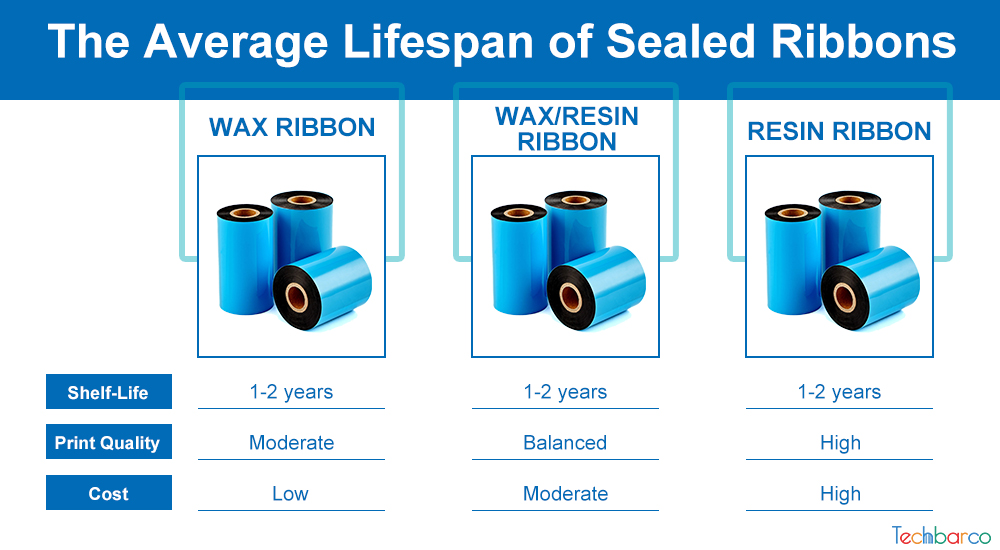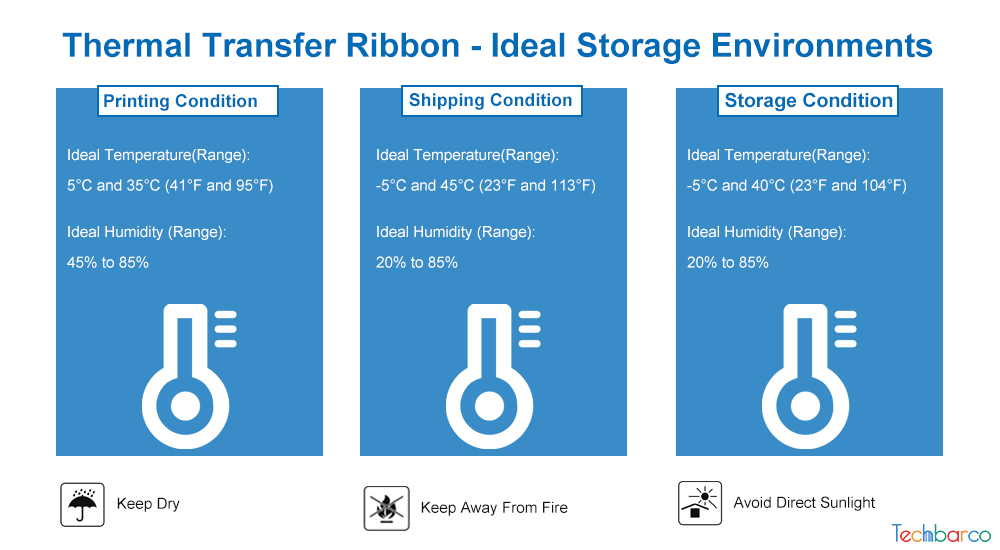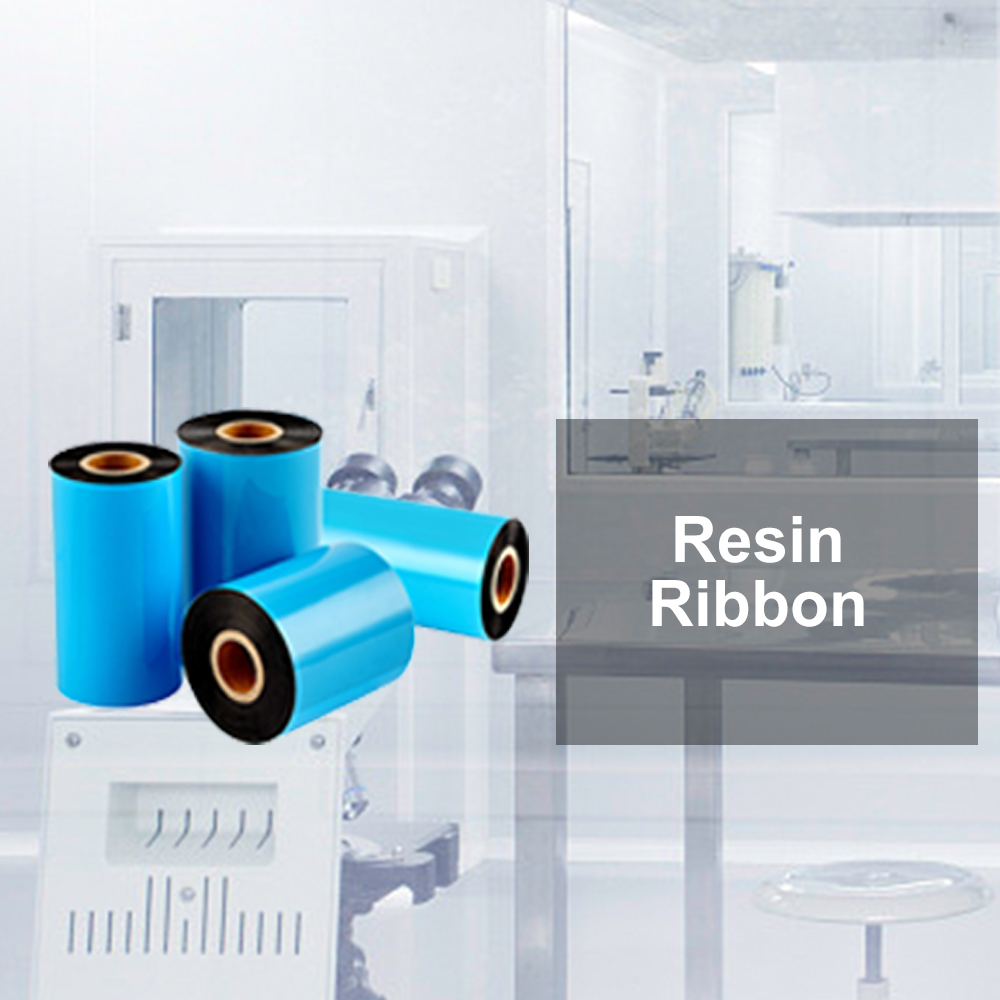Thermal Transfer Ribbons: The Shelf Life and Durability
Shelf Life of Thermal Transfer Ribbons
Whether it's Wax Ribbon, Resin Ribbon, or Wax-Resin Ribbon, each one has its own predicted lifespan. But what determines that lifespan, and how can you ensure your ribbons stay good to the last until you use them?
1. The Average Lifespan of Sealed Ribbons
Normally, a sealed thermal transfer ribbon can have a shelf life lasting up to 1 to 2 years if stored under proper conditions. This period will give you the assurance of the material properties of your ribbon so that when the time comes, it will transfer perfectly onto your chosen substrate.

2. Factors Contributing to Shelf Life Before Use
There are many variables that may have an impact on the shelf life of thermal transfer ribbons even before they reach the printer. First, there is the matter of the ribbon's composition; the storage conditions may affect wax differently from resin or wax resin. Other than this, too much heat, light, or moisture can generally reduce the useful life of a ribbon as it will alter its physical and chemical structure.
3. Common Causes of Shortened Lifespan
Other environmental factors that may impact the quality of the ribbons over time are direct sunlight, high temperatures, and humidity levels. Indirect factors like the amount of dust or exposure to volatile chemicals in a storage area may also lessen the effectiveness of the ribbons.
Storage Solutions to Improve the Shelf Life of Thermal Transfer Ribbons
Proper storage is paramount in maintaining the integrity and, at the same time, increasing the shelf life of your thermal transfer ribbons. An ideal environment for this sensitive material can prevent it from aging prematurely and degrading.
1. Creating Ideal Storage Environments
The shelf life of the thermal transfer ribbons depends heavily upon the conditions under which they are stored.
- Temperature Control: Store ribbons in a cool, stable environment where temperatures are consistently between -5°C and 40°C (23°F and 104°F). Extremes of temperature should be avoided as it can cause the material of the ribbon to either soften or get brittle and also cause distinction for the printing.
- Humidity Regulation: Store ribbons where the relative humidity lies in the 20% to 85% range. High humidity causes ribbons to stick to each other. Also, low humidity allows static build-up, which also impinges the printing performance.
- Light Exposure: Keep ribbons away from direct sunlight and bright artificial lights, as UV exposure can fade the colorants in the ribbons and degrade their quality over time.

2. Measures to Prevent Degradation Over Time
Besides the above-mentioned points, to protect more from degrading of the thermal transfer ribbons, take the following preventive measures:
- Proper Sealing: Store the ribbons in their original packing till the time they are used. The ribbons are exposed to air, which leads to moisture and contaminants getting into it.
- Vertical Storage: Store ribbon rolls in a vertical disposition. Horizontal stacking, or the ribbon will become flattening or creasing. Compressed ribbon may not feed properly through a printer.
- Dust-Free Surroundings: Store ribbon in a clean environment. Dust particles can adhere to ribbon surfaces and interfere with the printing process, causing defects in the final output.
Maximizing In-Use Lifespan of Thermal Transfer Ribbons
After confirming the proper storage of your thermal transfer ribbons, it is equally important to know the impactful variables in their life span during use.
1. Impactful Variables on Ribbon Usage Duration
Several factors will determine how long your wax, resin, or wax-resin ribbons last once they are in use:
- Material Types: Each ribbon type is designed with specific properties and uses in mind. Wax ribbons are typically softer and may wear down faster under high-volume printing conditions. Resin ribbons are tougher and more resistant to friction, making them last longer. Wax-resin ribbons offer a compromise between the two, balancing durability and print quality.
- Compatibility with Printers: Not all ribbons are created equal for all printers. Specifically, compatible ribbons for your make and model printer will provide maximum contact and transfer efficiency, resulting in reduced wear and tear on the ribbon and the print head.
- Printing Frequency and Intensity: Intensive, high-speed printing, and continuous operation apply higher heat and friction on the ribbon, reducing its useful life. When running high-volume print jobs, stopping for regular intervals will help minimize this stress.
2. Impact of Printer Heat Settings on Ribbon Wear
Heat settings on your printer play a crucial role in how quickly a thermal transfer ribbon wears out:
- Balanced Heat: When too much heat is applied, it melts in excess and is a cause of sticking or breaking the ribbon, while too little heat results in scanty ink being transferred to the substrate. The right balance is crucial for clear printing and increases the durability of the ribbon.
- Consistent Monitoring: Regularly check and adjust the printer's heat settings according to the type of ribbon used to ensure consistent performance and minimize wear.
How to Preserve the Life of Thermal Transfer Ribbons?
Extending the life of your thermal transfer ribbons not only improves the efficiency of your print operations but also optimizes your investment in supply costs.
1. Ways to Maintain Ribbon Quality
Keeping a quality ribbon requires proactive management of your supplies through:
- Regular Inspections: Make periodic vigilance of rolls of ribbons for indications of damage and wearing off before inserting them into the printer. This should avert the wastage of the ribbon and printing errors that may result.
- Gentle Handling: One should have little contact with the ribbons since the oils and residues on the skin could tamper with the quality of the print and result in degradation.
- Printing Speed Adjustments: Printing at slower speeds creates lesser load on the ribbon and the printer too. Thus, it could contribute to lesser weariness of the ribbon, allowing it to last longer.
2. Printer Maintenance to Retain Ribbon Quality
The health of your printer is as crucial to the quality of the ribbon:
- Clean Print Heads: Perform routine cleaning cycles on print heads to maintain clear and consistent transfers onto the substrate, which helps in preventing overuse of ribbon material due to poor print quality requiring reprints.
- Examine Ribbon Path: Ensure there are no obstructing materials or residues along the ribbon path where they could cause snags or stretch the ribbon material during printing.
- Timely Replacements: Replace printer parts that are worn out or damaged, such as rollers and bearings, to ensure smooth operation and reduce the risk of ribbon tears or paper jams.
3. Efficiency in Operation: Setting Adjustments for Optimal Ribbon Use
Adjust your printer setting to match your printing needs and the corresponding ribbon type, which can have you operate in more efficient methods such as:
- Print Density: The perfect print density setting would be the one that provides good quality prints without consuming the ribbon ink more than necessary. Too much darkness would consume the ribbon faster.
- Heat Settings: Correct heat settings have already been explained. It should constantly be monitored and, if required, tuned to, based on the type of ribbon – wax, resin, or wax resin and also should be changed with any change in environmental factors.
What External Factors Will Impact the Durability of Printed Materials?
Once your thermal transfer ribbons have been used to print labels, tags, or other materials, the durability of these printed items is subject to various external factors. Recognizing and controlling the influences can help ensure that your prints stay viable for a long time after they leave your printer.
1. The Environmental Impact After Printing
The surroundings in which your printed materials are used have a significant effect on their useful life:
- Climate and Exposure: Printed materials that are exposed to harsh environmental conditions like extreme temperatures, sunlight, and high humidity levels require ribbons with higher durability, such as resin ribbons, which offer greater resistance to these elements.
- Physical Handling: In environments where printed materials are frequently handled or rubbed against surfaces, the use of wax resin ribbons can offer a good balance in such situations between resilience and print-quality to ensure that your print does not easily rub off.
2. Interactions with Substrate Materials
The type of substrate you're printing on plays a crucial role in the durability of the final product:
- Material Compatibility: It's essential to select a ribbon type that best adheres to the specific material you're using, whether it's paper, polyester, or polypropylene. For example, resin ribbons are suited for synthetic substrates due to their stronger bond.
- Surface Characteristics: The texture and chemical composition of the substrate can affect print adhesion and abrasion resistance. Testing different ribbon types with your specific substrate is critical to finding the most durable solution.
3. Indoor Application vs. Outdoor Application
Finally, consider the final use your printed application will have:
- Indoor Application: Applications, where the material is consumed within indoor, non-windowed, or non-moisture-prone areas, can easily be printed with wax ribbons. A wax ribbon will be both cost-efficient and high-quality.
- Outdoor Application: If the printed materials are to be used outdoors, then resin ribbons or combinations of wax/resin will ensure that the printed materials can survive outdoors competently without any fading, or smudging.
A Wrap-Up on Thermal Transfer Ribbon Longevity
From storage to print, the journey of a thermal transfer ribbon is the roadmap to cautious preservation and strategic usage. If your goal is to exploit the flexibility of wax, the strength of a resin, or a happy medium performance wax resin ribbon-shelf life and durability are paramount to producing the best possible print. By careful control of environmental conditions, optimization of the printer settings, and adroit response to both substrate and application demands, we seal the deal on maximizing ribbon life. This not only ensures the integrity of our printed materials but also captures a commitment to operational efficiency and cost-effectiveness in the dynamic world of printing.



